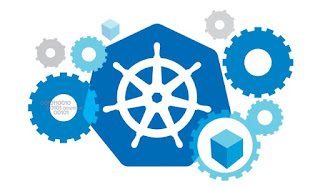Amazon EKS, Azure Kubernetes, and Google Kubernetes Cloud Services Compared
 The open-source project created by Google, and now shepherded by the
CNCF (Cloud Native Computing Foundation), has won the war for container
orchestration dominance. Kubernetes (pronounced koo-ber-NET-eez, from
the Greek word for “helmsman” or “pilot”) is the most rapidly adopted
open-source project in history since its release in mid-2014. According
to 451 Research,
it has already moved into more than 70 percent of organizations using
the wildly popular software called containers, which Kubernetes manages.
Containers make it simple to encapsulate applications in a form that’s
easy to run on any computing environment in companies’ data centers or
in public clouds. By some estimates, enterprise adoption rate of
Kubernetes will reach 90 percent by next year.
The open-source project created by Google, and now shepherded by the
CNCF (Cloud Native Computing Foundation), has won the war for container
orchestration dominance. Kubernetes (pronounced koo-ber-NET-eez, from
the Greek word for “helmsman” or “pilot”) is the most rapidly adopted
open-source project in history since its release in mid-2014. According
to 451 Research,
it has already moved into more than 70 percent of organizations using
the wildly popular software called containers, which Kubernetes manages.
Containers make it simple to encapsulate applications in a form that’s
easy to run on any computing environment in companies’ data centers or
in public clouds. By some estimates, enterprise adoption rate of
Kubernetes will reach 90 percent by next year.But that doesn’t mean that all of the Kubernetes offerings are the same—or equal. In this article, we’ll break down the key components of managed Kubernetes, and explore how each of the three major cloud providers—Amazon Elastic Container Service for Kubernetes, Azure Kubernetes Service, and Google Kubernetes Engine—differs in its support of the platform. Read at Inforworld




Comments
Post a Comment